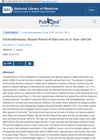Trichotillomania Across Circuits: Neurobiology, Sensory Processing, and Genetic Insights
August 2025

TLDR Trichotillomania treatment is improving with new therapies, but challenges like stigma and lack of training remain.
Trichotillomania is a neurobehavioral condition involving repetitive hair-pulling, affecting 1-2% of the population, yet it is often underdiagnosed due to stigma and lack of awareness. This review highlights recent research focusing on dysregulated reward circuits, abnormal sensory processing, and genetic factors, which have informed new treatment approaches. Behavioral therapy remains the primary treatment, but pharmacological options targeting glutamatergic and dopaminergic pathways show promise where traditional treatments fail. Technology-based interventions are also expanding. Despite these advances, challenges such as stigma, limited provider training, and insufficient data persist, necessitating further research and improved care strategies.


